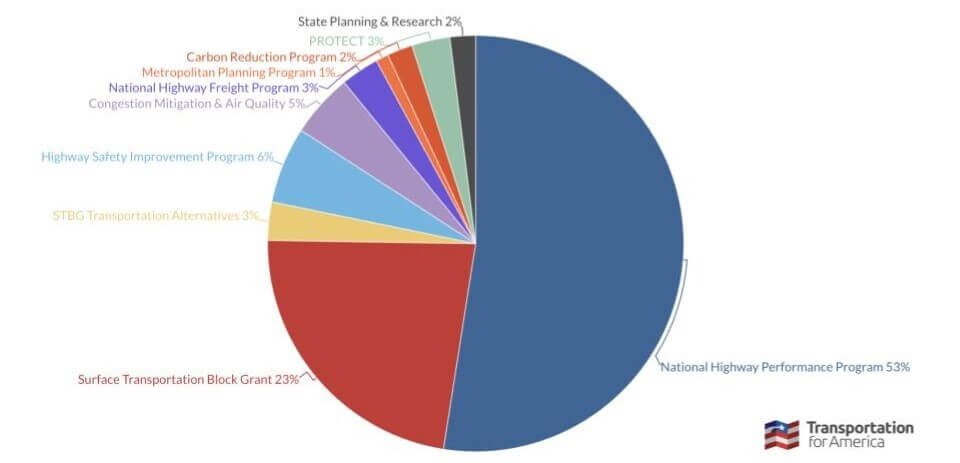Is your organization applying for or partnering on a federal grant application for one of the many US Department of Transportation Infrastructure Investment and Jobs Act (IIJA) programs?
By Ben Crowther
Earlier this month, Beth Osborne, Director of Transportation for America, and former USDOT staffer, joined members of the Freeway Fighters Network to share insights about the application process for the federal Reconnecting Communities program.
Although Beth was speaking directly about the Reconnecting Communities program, many of the takeaways are applicable to all sorts of USDOT grant programs. Here are her top five tips:
1. Max out the federal share by working with your state DOT to use formula funding
Discretionary grant programs often have high demand and limited funding. A program like Reconnecting Communities may only have $1 billion available, but much of the $400 billion dollars is distributed through the IIJA to state DOTs as “formula funding.” State DOT’s have tremendous flexibility to spend those dollars on good projects. Don’t let them tell you it’s “just for highways.” Formula funding can supplement dollars from discretionary federal grants or can be used to fund projects entirely if your discretionary grant application does not succeed.

2. Don’t bury the lede! Be clear about the scope, schedule, and budget at the start of the application
It’s likely that the grant program you’re applying for is going to receive hundreds of applications. Don’t make reviewers search for the salient details about your project; put them all at the beginning of the application. “If I could mandate that every application start the same way, I would,” says Beth. “They should all start ‘The sponsor of X, along with their partners, request X amount of dollars from this program, matched by Y amount of dollars, to do, in one sentence, this project.”
3. Make sure you directly address the Notice of Funding Opportunity’s primary criteria in your application
A Notice of Funding Opportunity (NOFO) details both primary and secondary criteria an application will be scored on. USDOT reviewers first-rate projects on whether or not they address the NOFO’s primary criteria. If a project scores poorly in this initial round, they won’t even review secondary criteria. The NOFO will also contain information about the score an application needs to advance; for Reconnecting Communities, an application needs ‘High’ ratings in at least two of the four primary criteria and zero ‘Non-Responsive’ ratings.
4. Write for people who have never been to your community and have no idea what your project is
During this process, you’re immersed in your project, but odds are your reviewers will know little to nothing about it. Explain clearly and concisely the problems your community faces and how the project addresses them. Your application should tell reviewers everything they need to know, without having them consult outside sources or rely on their existing knowledge. After you’ve drafted your application, ask someone from outside your community to read it and see if they’re able to follow the project narrative.
5. Pictures and maps tell 1000 words

Finally, the old adage is true here, especially when conveying information about streets and neighborhoods. Pictures and maps are particularly effective ways to communicate to an audience that is probably unfamiliar with your area. A dangerous street that needs to be made safer? A highway that cuts the community in half? A gap in public transit options? Show it to them!
These five tips are the top takeaways, but they aren’t the only ones. The entire workshop is available to watch here. Furthermore, be sure to visit Transportation for America’s Understanding the 2021 infrastructure law page for additional resources.
The success of the Infrastructure Bill depends on whether we spend the money wisely or poorly. Stay tuned for more from America Walks on how to build public demand and a broad base of support to channel that money into walkable, accessible, transit-rich communities.